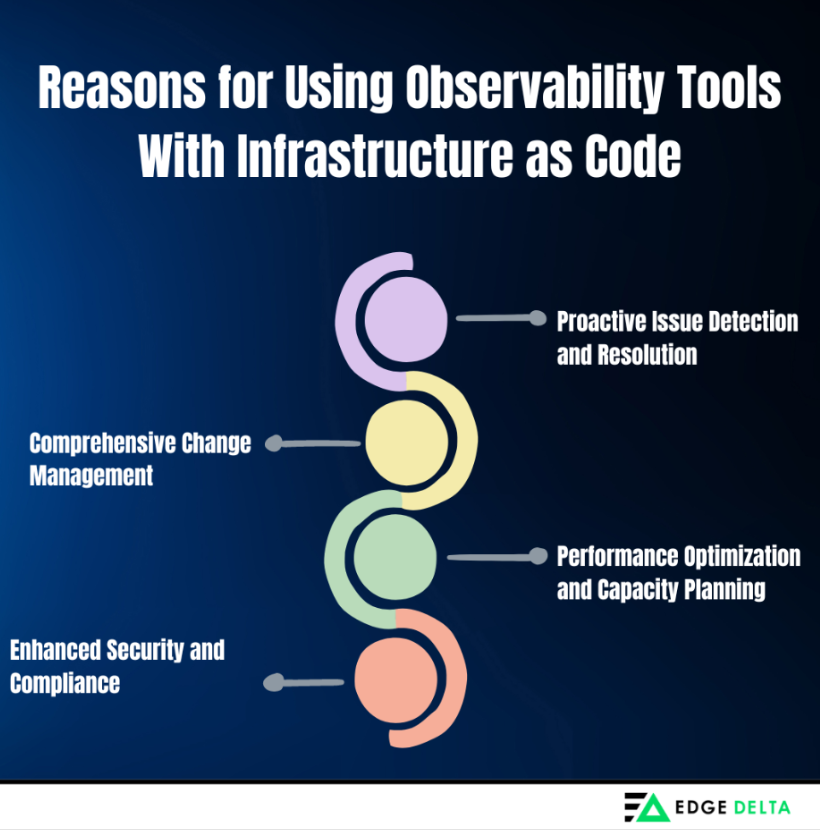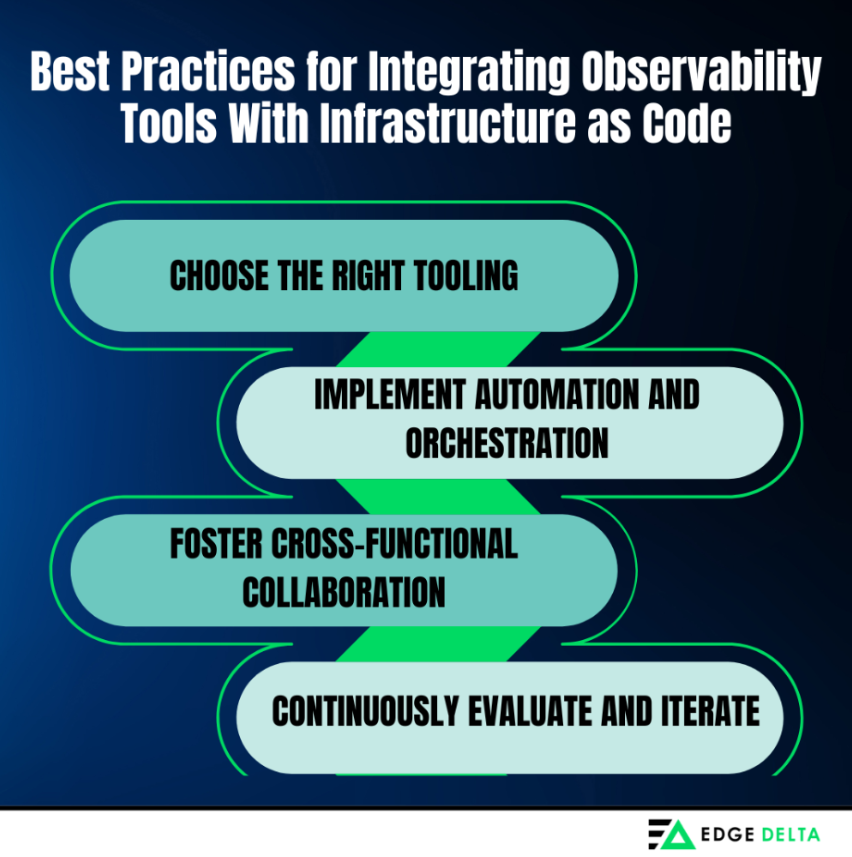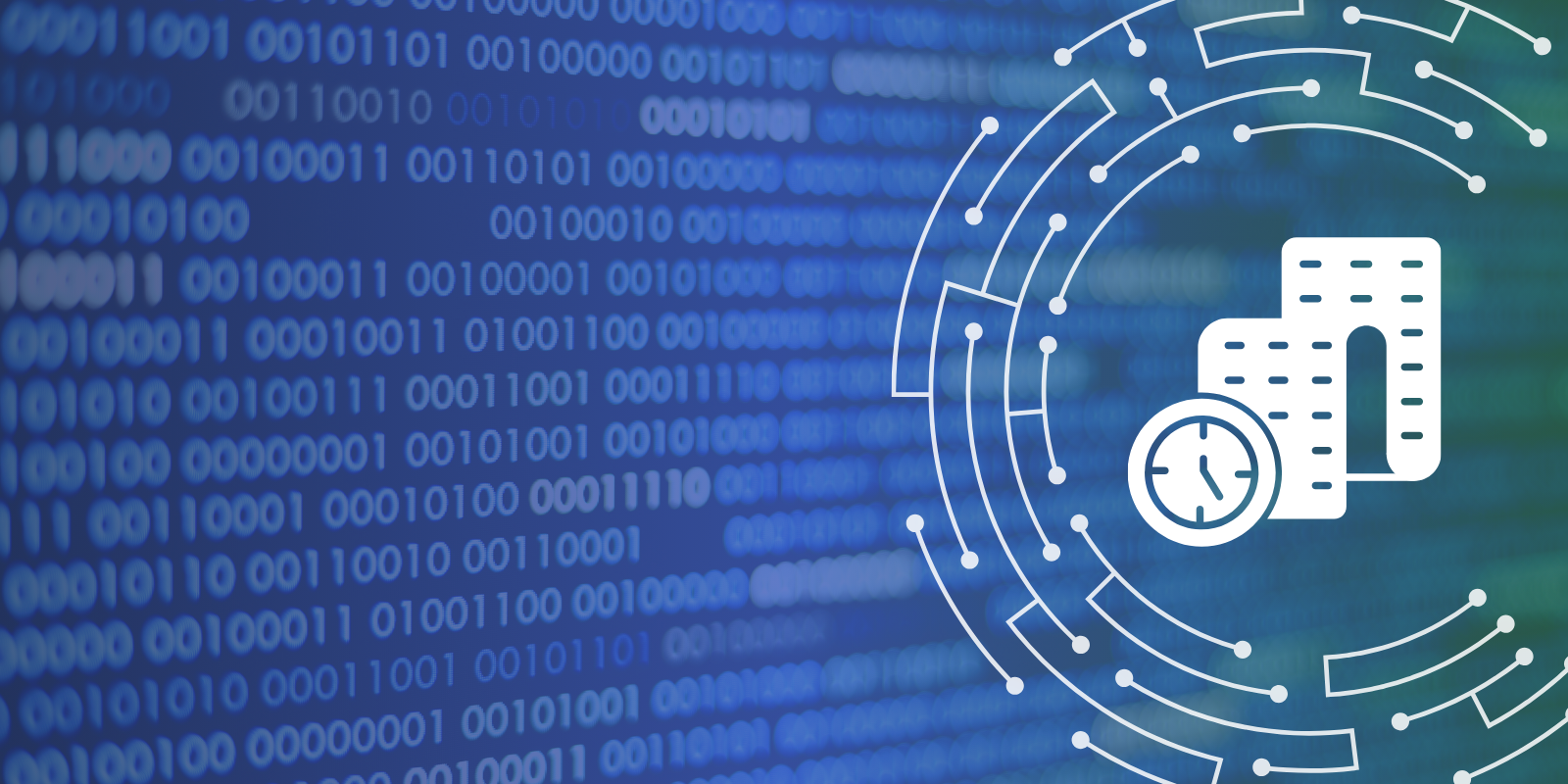The adoption of Infrastructure as Code (IaC) solutions has created a massive change in how developers interact with their system infrastructure. IaC shifts the approach from traditional infrastructure management to a modern, automated approach, whereby infrastructure is managed using only machine-readable definition files or high-level code. It removes the need to manually configure individual infrastructure components, and simplifies the process by which to interact with them.
Using observability tools to monitor your IaC solution ensures that deployments are reliable, secure, and highly performant. It provides numerous benefits, including streamlining the infrastructure troubleshooting process and maximizing effectiveness.
This article explores IaC through the lens of observability, and demonstrates why all organizations should use observability tools with Infrastructure as Code.
Key Takeaways
- Infrastructure as Code (IaC) has become increasingly prominent. It allows teams to manage and provision infrastructure using code, so they can spend less time managing environments and more time improving applications.
- Terraform, AWS CloudFormation, Azure Resource Manager (ARM), and Ansible are some of the most popular IaC tools.
- Most companies use observability tools with infrastructure as code for a number of reasons, including issue detection and resolution, comprehensive change management, performance optimization, and capacity planning.
- With IaC, businesses can gain benefits like increased visibility and control, faster incident response, and a lower mean time to resolution (MTTR).
- IaC presents several challenges and considerations that industries must address. To solve these challenges, you can implement the best practices and leverage reliable observability tools like Edge Delta.
Understanding Infrastructure as Code (IaC) and Observability
There are a number of popular IaC tools, including:
- Terraform
- AWS CloudFormation
- Azure Resource Manager (ARM) templates
- Google Cloud Deployment Manager
- Ansible
Each of these tools provides an easy way to configure infrastructure through high level instruction, without diving deep into the nuts and bolts of it.
Implementing observability with the integration of IaC as code can achieve significant results and benefits, which include:
- A holistic system view to monitor application and infrastructure metrics
- End-to-end comprehension of system performance and condition
- Quick issue detection and resolution for reduced customer impact
- Data-driven decision-making on infrastructure resource optimization
Many companies have been integrating observability tools with IaC. Continue reading to learn more about why.
Reasons for Using Observability Tools With Infrastructure as Code
Organizations have been driven to adopt Infrastructure as Code solutions to address their needs of improving infrastructure excellence, increasing operational observability, rapidly deploying high-quality software, and securing cloud workloads.
More concretely, companies implement observability tools with IaC for:
- Proactive Issue Detection and Resolution
- Comprehensive Change Management
- Performance Optimization and Capacity Planning
- Enhanced Security and Compliance
Here’s an in-depth look into each of these reasons:

Proactive Issue Detection and Resolution
Observability tools enable proactive monitoring and troubleshooting, provide real-time monitoring and alerting abilities, and allow companies to detect and address issues and problems before they spiral out of control. By integrating these tools with Infrastructure as Code (IaC), businesses can
- Automatically monitor infrastructure changes
- Successfully identify potential problems
- Swiftly Resolve issues
Comprehensive Change Management
Change management can be critical in dynamic infrastructure environments, and a combination of observability and IaC provides exactly that.
Observability tools can help you manage:
- Infrastructure changes
- Versioning
- Dependencies
Every change to the infrastructure is tracked and versioned, making it easier to understand its impact. This integration helps maintain a clear audit trail and ensures that modifications are automatically monitored for performance and security impacts.
Performance Optimization and Capacity Planning
Organizations require performance optimizations, actionable insights, and observability tools to provide valuable insights into system performance and resource utilization. By leveraging observability and its tracking abilities, operators and developers can
- Spot performance trends
- Establish alert levels
- Make wise decisions to optimize resource allocation
- Boost overall system performance
Note
Optimizing resource allocation helps reduce cloud costs as well. With this process, organizations ensure that every resource is used, preventing waste that results in lower cloud costs.
When used alongside IaC, companies can proactively optimize performance and plan for capacity. This process ensures that infrastructure scales efficiently to meet demand, avoiding over-provisioning and under-provisioning resources.
Enhanced Security and Compliance
Security and compliance are critical in modern IT environments. Observability tools can help you can identify vulnerabilities before they do the damage, and monitor compliance of the system with different industry standards and requirements.
AI-Powered observability ensures the systems are uniform, secure, and future-proof, by addressing every associated issue with advanced AI/ML algorithms.
Observability tools can:
- Secure the infrastructure
- Minimize the risk of security breaches
- Prevent regulatory fines
In addition to these critical reasons, there are more benefits that a combination of IAC and Observability tools can offer. Here are some of them.
Benefits of Using Observability Tools With Infrastructure as Code
Infrastructure as Code (IaC) is a powerful method for managing business infrastructure, offering numerous features that enhance crucial business processes. Integrating observability tools with IaC provides several key benefits, including:
- Increased Visibility and Control
- Faster Incident Response and Mean Time to Resolution (MTTR)
- Improved Collaboration and Knowledge Sharing
- Cost Optimization and Resource Efficiency
Here’s an in-depth look at each of these benefits.

Increased/Complete Visibility and Control
Development teams and IT often need help with infrastructure visibility. Integrating observability tools with IaC provides visibility and control over the entire IT infrastructure, including:
- Performance metrics
- Actionable data
- Managed resources
- Latency details
- Root cause of delays and incidents
Most observability tools come with advanced visual dashboards making it easy for all roles in companies to make informed decisions and maintain control over the infrastructure.
Faster Incident Response and Mean Time to Resolution (MTTR)
Rapid incident response is critical in minimizing downtime and disruptions for any organization. Observability tools are designed to streamline the incident detection process.
When observability tools are paired with IaC, DevOps can gain faster incident detection (reducing MTTD) and response (reducing MTTR) by using automated alerts and detailed logs, which leads to:
- Reduced downtime
- Well-performing and available services
- Improved overall customer satisfaction
Note
To effectively reduce MTTD/MTTR, you need a monitoring solution that generates real-time insights. Edge Delta offers real-time monitoring, and also provides advanced AI and ML patterns to identify issues before they happen, all of which happens on the edge, where your data is created.
Improved Collaboration and Knowledge Sharing
Organizations can streamline their software development lifecycle by automating infrastructure deployment and configuration, delivering higher-quality software while improving cross-team collaboration and knowledge sharing.
Observability tools offer increased deployment speed and cross-team collaboration without increased complexity. they can help IaC systems with:
- Eliminating data silos
- Aligning infrastructure performance and health
- Ensuring all stakeholders are informed of all changes
- Promoting a collaborative culture
Better Cost Optimization and Resource Efficiency
Automating tasks like infrastructure configuration with IaC allows engineers to finish infrastructure set-up quickly and focus on mission-critical activities. However, it can sometimes lead to inefficiencies in resource usage.
Observability tools provide continuous monitoring of resource utilization and performance, helping companies identify and optimize underused resources. This approach minimizes costs, enhances resource efficiency, improves budget management, and increases ROI.
Beyond these significant benefits, however, there are also challenges to consider when using observability tools with IaC.
Challenges and Considerations When Using Observability Tools With Infrastructure as Code
Integrating observability tools with IaC presents several challenges and considerations that organizations must address to leverage their full potential. These challenges include:
- Tool integration and compatibility
- Data overload and alert fatigue
- Skill gaps and training need
- Security and compliance concerns
Here’s an in-depth look into each of these challenges:
Tool Integration and Compatibility
Integrating observability tools with existing IaC workflows can be challenging due to complex dependencies and potential compatibility issues.
This issue can be mitigated using infrastructure orchestration tools like Terraform or AWS CloudFormation, which provide dependency management capabilities. It is also essential to consider choosing tools compatible with your current infrastructure, offering easy integration and the ability to support automation. Choose tools that provide:
- Comprehensive APIs
- Powerful documentation
- Strong community support
Note
If you’re implementing observability as code with Terraform, you can use third-party tools to manage it. For instance, Edge Delta offers a Terraform Provider, a feature that can manage hundreds of agents in one Terraform Config.
Data Overload and Alert Fatigue
One of the significant challenges in observability is overwhelming data volumes and alert fatigue, which can hinder infrastructure observability efforts. Multiple alerts can desensitize teams, causing crucial issues to be overlooked.
Implementing strategies to focus and prioritize relevant metrics is crucial to prevent this. Additionally, intelligent alerting can also be implemented. This approach prioritizes and escalates alerts based on their importance and severity- ensuring that critical issues are appropriately addressed. Other strategies that organizations can implement include:
- Data filtering
- Data aggregation
- Implementing alert priorities
Pro Tip
Leveraging observability tools can help you deal with massive data volumes. For instance, Edge Delta’s edge computing features bring real-time alerts to security data lakes. Edge Delta uses AI to ingest all data and intelligently pre-process it, providing you with quick alerts and lightning quick insights.
Skill Gaps and Training Needs
One of the challenges of implementing IaC is the complexity and learning curve associated with adopting new tools and frameworks. Tool complexities can result in massive skill gaps, hindering any practical use. Thus, ensuring teams obtain the skills to leverage the observability tools effectively is necessary.
Organizations should invest in training seminars and educational programs which provide teams with the essential knowledge to utilize these tools, to ensure infrastructure is monitored accurately. To prevent these skills gaps and improve team competency, organizations can also conduct the following:
- Regular workshops
- Certification programs
- Hands-on training sessions
Security and Compliance Concerns
Implementing best practices and ensuring that these practices comply with the industry-regulated standards is crucial. Ensure your observability practices comply with relevant regulatory requirements, including data protection laws and industry-specific standards. Make sure to leverage:
- Encryption
- Strict access control
- Regular audits
Best Practices for Integrating Observability Tools With Infrastructure as Code
While infrastructure as code certainly plays an essential role in cloud-native environments, leveraging it with observability tools requires effective practices to maintain a robust and scalable IT environment. These effective practices include the following.
- Choose the Right Tooling
- Implement Automation and Orchestration
- Foster Cross-Functional Collaboration
- Continuously Evaluate and Iterate

Choose the Appropriate Observability Tools
When choosing an observability tool for your IaC solution, evaluating them based on the following criteria is crucial:
- Compatibility: Select observability tools that are compatible with your IaC frameworks and existing infrastructure. This ensures smooth integration and reduces the risk of compatibility issues.
- Comprehensive APIs: Opt for tools that offer comprehensive APIs, enabling seamless integration and automation.
- Features: Guarantee that the tools provide comprehensive monitoring capabilities, which include tracing, logs, and metrics.
- Scalability: Choose tools that can scale with your infrastructure, accommodating growth and increased complexity over time.
- Community Support: Prefer tools with strong community support and active development. This ensures you have access to resources and help when needed.
- Documentation: Ensure the tools come with thorough and clear documentation to facilitate easier implementation and troubleshooting.
- Vendor Support: Choose tools backed by solid vendor support, which includes active communities and responsive customer service.
Pro Tip
You can use open-source observability practices, in certain cases. With open-source tools and technologies, you can enjoy flexibility without vendor lock-in issues.
Implement Automation and Orchestration
Cloud automation and orchestration streamline observability workflows, which is crucial for enhancing efficiency and consistency. Leveraging automation and orchestration can help organizations reduce manual efforts and minimize human errors, ensuring a consistent application of observability practices across the entire infrastructure.
To implement the full potential of observability automation and orchestrations, here are some strategies that organizations should take into consideration:
- Automated Monitoring: Set up automated monitoring for your IaC deployments to continuously track performance, usage, and potential issues.
- Alerting Systems: Implement automated alerting systems to notify your team of any anomalies or threshold breaches in real-time.
- Response Action: Guarantee automated response actions, such as restating services and scaling resources, to help mitigate issues without manual intervention.
- Dependency Management: Use infrastructure orchestration tools like Terraform or AWS CloudFormation to manage dependencies and interdependencies between resources.
- Continuous Integration/Continuous Deployment (CI/CD): Integrate observability tools into your CI/CD pipelines to ensure that monitoring and logging are part of your deployment process from the start.
Foster Cross-Functional Collaboration
Using best practices, organizations can develop a unified approach to observability, enhancing their efforts’ overall effectiveness and alignment. Here are some practices to foster cross-functional collaboration:
- Unified Goals: Align goals across development, operations, and security teams to ensure everyone is working towards the same objectives.
- Regular Communication: Facilitate regular communication and meetings between teams to discuss observability insights, issues, and improvements.
- Shared Responsibility: Promote a culture of shared responsibility where all teams contribute to and benefit from observability practices.
- Training and Education: Provide ongoing training and education to all teams on the importance and use of observability tools and practices.
- Encourage knowledge sharing: Promote members for knowledge sharing, including meetings and workshops, to ensure everyone understands and can contribute to the observability efforts.
- Establish cross-functional teams: Gather and create teams with diverse experience and disciplines handling operations, security, and development.
Continuously Evaluate and Iterate
Continuous evaluation is crucial for IaC. Thus, companies must commit to implementing ongoing assessments and refinements. These processes are only possible through regularly monitoring and analyzing the tool’s metrics. By doing these evaluations, organizations can locate areas that need improvements and adaptation.
- Request for feedback: Collect feedback from stakeholders and team members to better understand the performance and effectiveness of the current observability tools.
- Monitor and analyze metrics: Regularly inspect observability metrics to determine patterns, trends, and areas for improvement.
- Regular Audits: Conduct regular audits of your observability practices to identify gaps and areas for improvement.
- Adapt to Changes: Stay updated with the latest developments in observability tools and practices and be ready to adapt your strategies to incorporate new advancements.
- Incremental Improvements: Focus on making incremental improvements rather than overhauling your entire system at once, allowing for more manageable and sustainable changes.
Wrap Up
With IaC, teams can address inconsistencies, tool integration, data overload, and other infrastructure management challenges. As a result, it ensures that the organization’s infrastructure becomes efficient and scalable.
Using observability tools with Infrastructure as Code (IaC) isn’t just interesting – It’s a revolutionary approach that helps organizations consistently keep their infrastructures up and running. Without observability, issues of scale, security, and unexpected behavior will limit the value IaC brings.
FAQs on Observability Tools With IaC
Why should we use infrastructure as code?
IaC offers simplicity for configuring environment infrastructure. It speeds up all relevant processes, including deploying new components or troubleshooting issues, to enable developers to spend more time on developing applications.
Which tools may be used to represent infrastructure as code?
Infrastructure-as-code tools include AWS CloudFormation, Chef, Google Cloud Deployment Manager, HashiCorp Terraform, Microsoft Azure Resource Manager, Puppet, and more.
What is observability infrastructure as code?
Observability as code facilitates the automation of configuration tasks. It provides a practical way to collect, analyze, store, and visualize logs, traces, and metrics to give a connected real-time view of all operational data.
What are the benefits of observability as code?
Some benefits of observability as a code include reduced toil documentation and context, enabled auditable history, and cost reduction.






